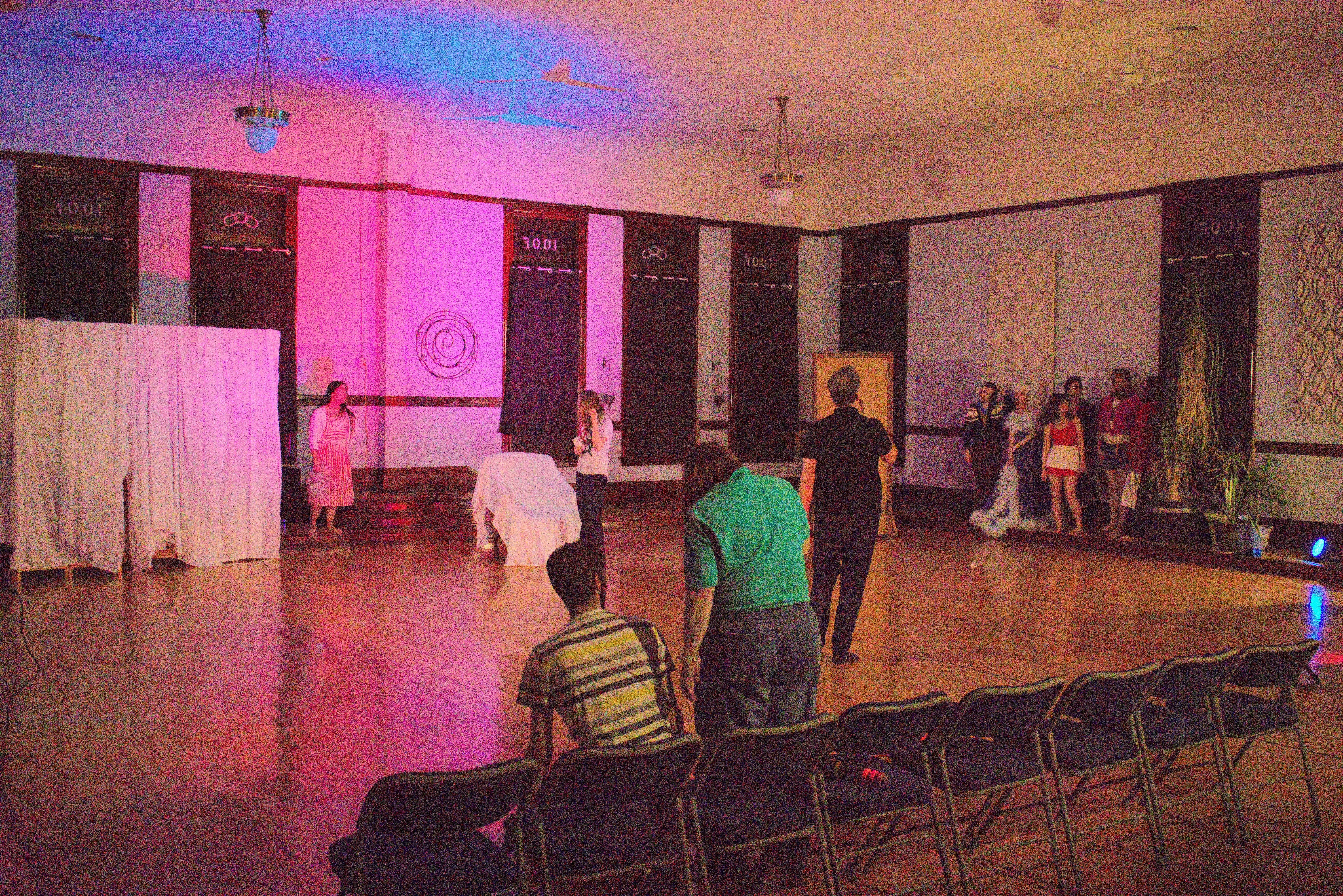When most people hear The Marriage of Figaro, they think of the lengthy opera by Mozart. But the Gustavus production of The Marriage of Figaro by Pierre Beaumarchais is nothing like the opera.
Beaumarchais’ comedy, which actually inspired Mozart’s infamous work, is perhaps the most prized diamond in the rough theatrical history has to offer.
Boasting a passionately energetic cast, innovative director, and fascinating history, this Gustavian take on a Beaumarchais masterpiece is not one to miss.
The Marriage of Figaro is the second installment of a Figaro trilogy, the history of which offers an enthralling peek into French politics, class distinction, and censorship.
Napoleon Bonaparte himself called the play “the Revolution already in action”. Figaro was initially banned by King Louis XVI for its harsh criticism of French social hierarchy and satirical portrayal of the French aristocracy.
But Beaumarchais refused to see Figaro silenced, organizing private performances and revising until the king lifted its ban in 1784.
Unfortunately, Marriage of Figaro, though successful in its early days, was quickly overpowered by the fame of Mozart’s opera by the same name, inspired by Beaumarchais’ original.
Beaumarchais boldly prioritized politics in both his plays and his life, lobbying for French involvement in American independence, devising elaborate arms deals to the colonies, and later participating in the early stages of the French Revolution.
“My favorite part of the production has been the cast. Everyone has put a lot of work into developing really unique characters. Plus everyone is hilarious.” – Jacob Marcott
Though the Figaro plays are largely steeped in French history, the universal nature of their political commentary has stood the test of time.
From gender pay gaps to disenfranchisement of the lower class, many of the issues Beaumarchais courageously attacks in his works remain prevalent to modern audiences.
Hannah Mahr, who plays Countess Almaviva, finds the marriage between satire and politics to be highly effective in Figaro.
“Pierre Beaumarchais balances comedy and social commentary so skillfully in this script,” Mahr said. The character of Countess Almaviva also reflects the concept of powerful women Beaumarchais worked to vocalize.
“[The Countess] is a wickedly strong, smart, and dramatic woman,” Mahr said.
Despite the emphasis on social justice, Director Henry MacCarthy maintains that this play is first and foremost a comedy.
The play chronicles a single day in which Figaro is to be married, but this central motive quickly succumbs to hilarious plots of lustful jealousy and unearthed secrets.
“It’s like a soap opera,” MacCarthy said. Power struggle meets stolen lovers meets quirky characters, all in a single, side-splitting day.
“People are coming up with plots, so it’s really twisted but very funny… We meet a bunch of characters who are really off the wall,” MacCarthy said.
One of MacCarthy’s main requests for audiences is not to be turned off by the title—this is not a four-hour opera, it’s a rather amusing play.
In order to maintain the rhythmic hilarity of Figaro, an immense amount of energy is required by the cast.
“The energy level of this cast is fantastic,” MacCarthy said. Jacob Marcott portrays Figaro in addition to taking on the production for his honors project as a senior theatre major.
Like MacCarthy, Marcott sees a lot of strength in this cast. “My favorite part of the production has been the cast. Everyone has put a lot of work into developing really unique characters. Plus, everyone is hilarious,” Marcott said.
Clay Sletta, also a senior member of this powerhouse cast, cites the camaraderie of the group as his favorite part of production.
“We all have a certain level of comfortability to take bigger risks in the rehearsal space without the fear of failure. [Your] colleagues will support you, even if you fall flat on your face… I couldn’t be more proud of my cast and crew for all being champions,” Sletta said.
‘Champions’ is the perfect word for describing this group, especially considering the obstacles they’ve overcome to do Figaro justice.
Despite an incredibly rapid rehearsal period and unconventional venue, this cast has taken production challenges and run with them.
“It’s like a soap opera… People are coming up with plots, so it’s really twisted but very funny.” – Henry MacCarthy
“We’ve been working like lightning,” Marcott said. With just over a month to rehearse the show, timing has been crucial to production.
“The cast and crew have been particularly exceptional [with] the fast-paced speed… We usually have [two] or three months to create the final product, [but here] we had about five weeks to make the show happen,” Sletta said.
The ‘unconcantional’ performance space is the St. Peter Yoga Studio, instead of the usual campus performance spaces.
“It’s challenging, [but] that’s what real life looks like,” MacCarthy said. Indeed, performing Figaro in a non-performance space has trained the cast to adapt rapidly, a strength undoubtedly vital to showbusiness.
“Rehearsing in the space you’re going to perform in is a luxury we take for granted,” MacCarthy said.
If any of the obstacles presented to this production have caused additional stress, MacCarthy is unphased.
Clearly the relentless dedication, efficiency, and unbridled talent this group presents not only instills confidence in their director but in themselves.
The Marriage of Figaro by Pierre Beaumarchais will be showing at the St. Peter Yoga Studio Friday April 20 and Saturday April 21 from 8-10 p.m. and Sunday April 22 from 2-4 p.m.
There are only 85 tickets available for each performance, so get yours as soon as possible.
This hilarious yet insightful production performed by an incredibly compelling team of people will certainly make you laugh, embolden you toward change, and offer you a slice of unsung history in the process.
